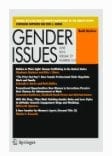
Hidden in Plain Sight: Human Trafficking in the United States
In examining human trafficking in 25 nations throughout the world we discovered that each country has its own environmental factors that create a unique set of anti-trafficking issues and obstacles. For example, in India you can’t address the issue of trafficking without also discussing the caste system. In the US you can’t properly address the post-trafficking experience of victims without mentioning the hot button issue of immigration. Despite nation-specific differences, the characteristics of human trafficking are remarkably similar worldwide. Such common characteristics are fraudulent recruitment, exorbitant travel and recruitment fees, the withholding of the victim’s visas and other identifying documentation, controlling and limiting the victim’s movements, threatening deportation, threatening to harm the victim or his/her family, and physically harming the victim. These frequent traits of the trafficking experience can be seen in any nation regardless of geographical location or whether the nation is considered first, second, or third world. What makes identifying each nation’s unique anti-trafficking issues and obstacles critical is not only to recognize potential victims but also to point to common practices or even national objectives that may be in direct conflict with the specific nation’s own anti-trafficking efforts. This article not only describes the precise picture of human trafficking in the US but also illustrates that no nation, including the US, is exempt.
